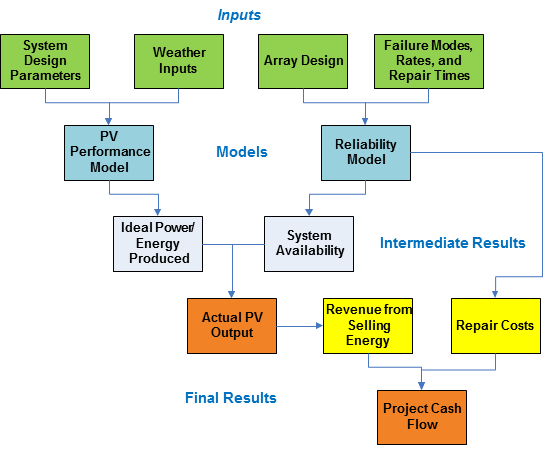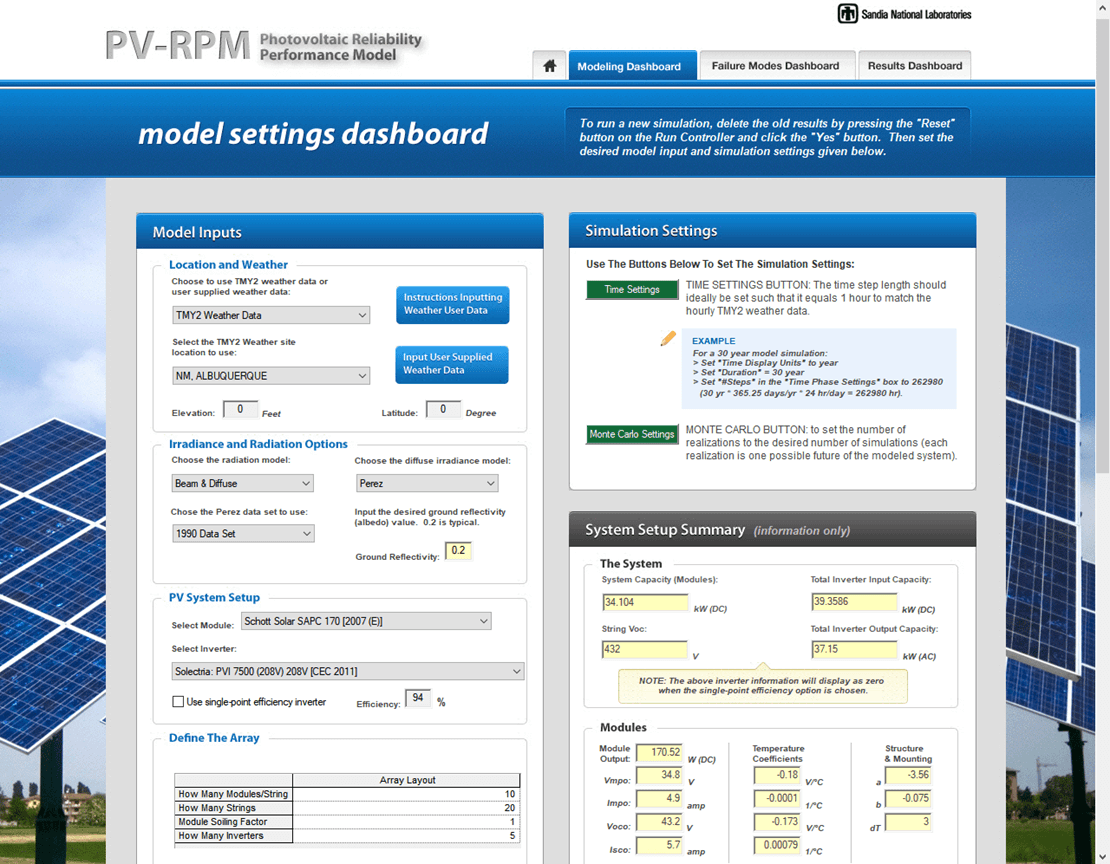Modeling Photovoltaic System Reliability and Performance

A photovoltaic (PV) system can range in size from a tiny system consisting of a single PV module (commonly called a solar panel) connected to a battery to very large utility systems consisting of thousands of modules and dozens of inverters. The PV modules convert the sun's energy to DC electricity, and the inverters convert that DC electricity to AC electricity. A PV system can include many other components as well, including transformers, AC and DC disconnect switches, combiner boxes, and trackers to allow the modules to follow the arc of sun across the sky.
Accurately predicting the performance of PV systems can be a challenging undertaking, but a necessary one in order to assess its financial viability. PV system energy production can be affected by numerous factors including the choice of location (and hence weather), component technology, and system design.
A team at Sandia National Laboratories used GoldSim to simulate the performance of photovoltaic arrays under “real world” situations by coupling the performance model with a reliability model so that inverters, PV modules, combiner boxes, and other components can experience failures and be repaired (or left unrepaired). The model also simulated other effects, such as PV module output degradation over time or disruptions such as electrical grid outages. The model was then used to probabilistically model the reliability of the PV system components over the lifetime of the system.


Learn More
A Reliability and Availability Sensitivity Study of a Large Photovoltaic System
